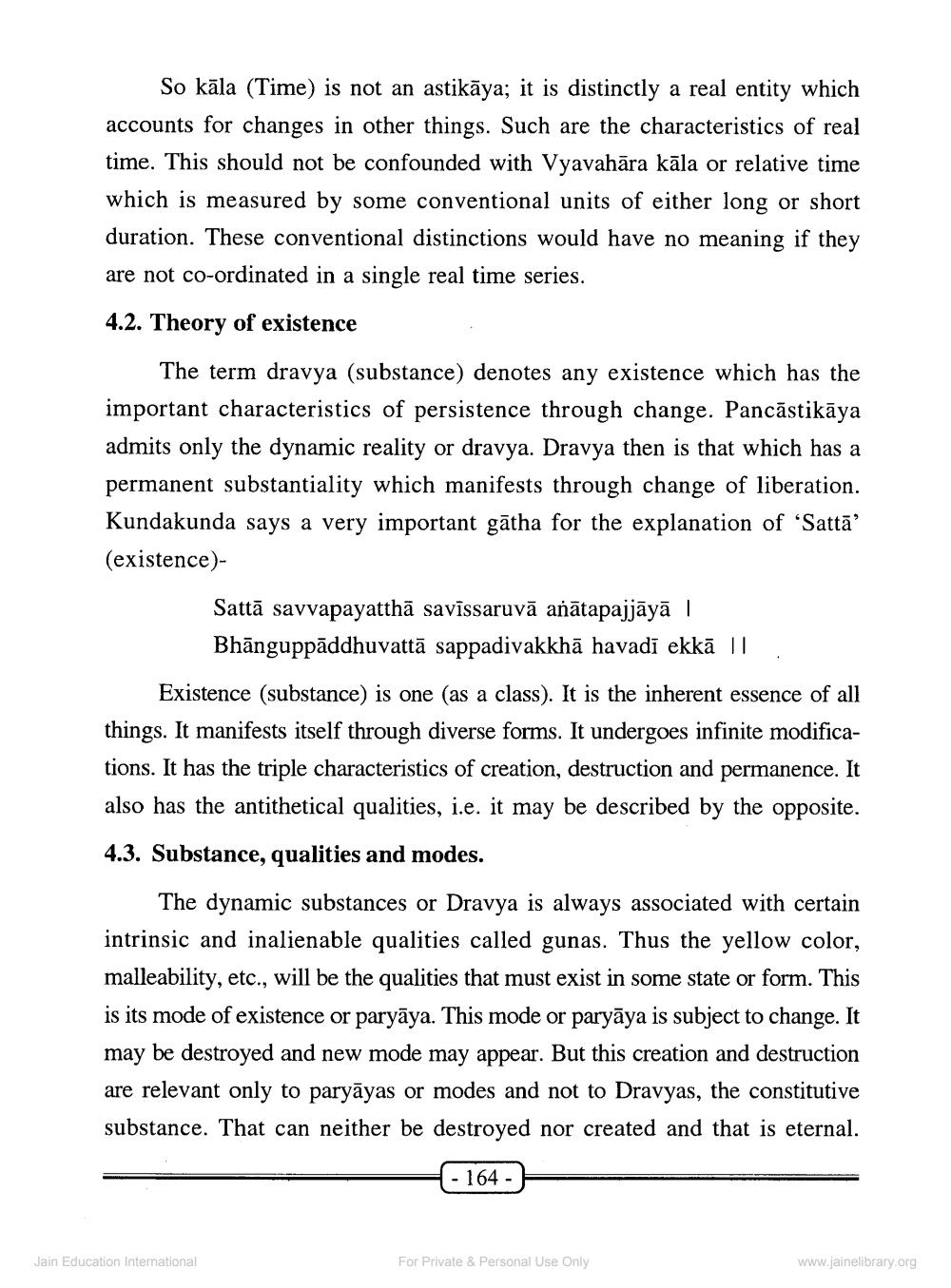________________
So kāla (Time) is not an astikāya; it is distinctly a real entity which accounts for changes in other things. Such are the characteristics of real time. This should not be confounded with Vyavahāra kāla or relative time which is measured by some conventional units of either long or short duration. These conventional distinctions would have no meaning if they are not co-ordinated in a single real time series.
4.2. Theory of existence
The term dravya (substance) denotes any existence which has the important characteristics of persistence through change. Pancāstikāya admits only the dynamic reality or dravya. Dravya then is that which has a permanent substantiality which manifests through change of liberation. Kundakunda says a very important gātha for the explanation of 'Sattā (existence)
Sattā savvapayatthā savīssaruvā añātapajjāyā ||
Bhānguppāddhuvattā sappadivakkhā havadī ekkā ||| Existence (substance) is one (as a class). It is the inherent essence of all things. It manifests itself through diverse forms. It undergoes infinite modifications. It has the triple characteristics of creation, destruction and permanence. It also has the antithetical qualities, i.e. it may be described by the opposite. 4.3. Substance, qualities and modes.
The dynamic substances or Dravya is always associated with certain intrinsic and inalienable qualities called gunas. Thus the yellow color, malleability, etc., will be the qualities that must exist in some state or form. This is its mode of existence or paryāya. This mode or paryāya is subject to change. It may be destroyed and new mode may appear. But this creation and destruction are relevant only to paryāyas or modes and not to Dravyas, the constitutive substance. That can neither be destroyed nor created and that is eternal.
- 164 -
Jain Education International
For Private & Personal Use Only
www.jainelibrary.org




